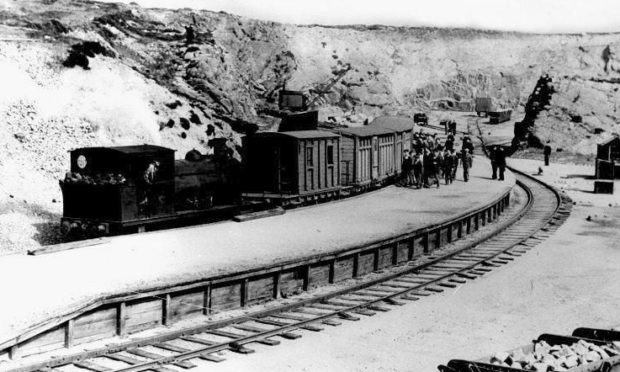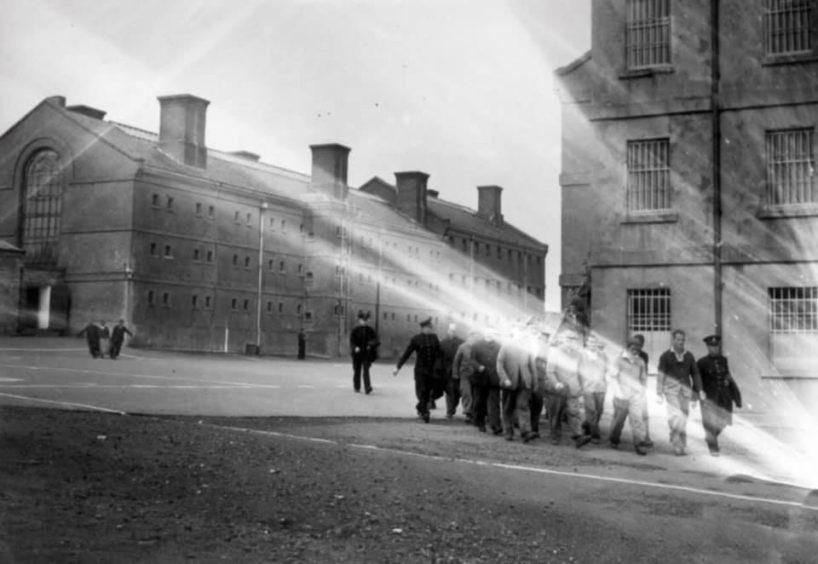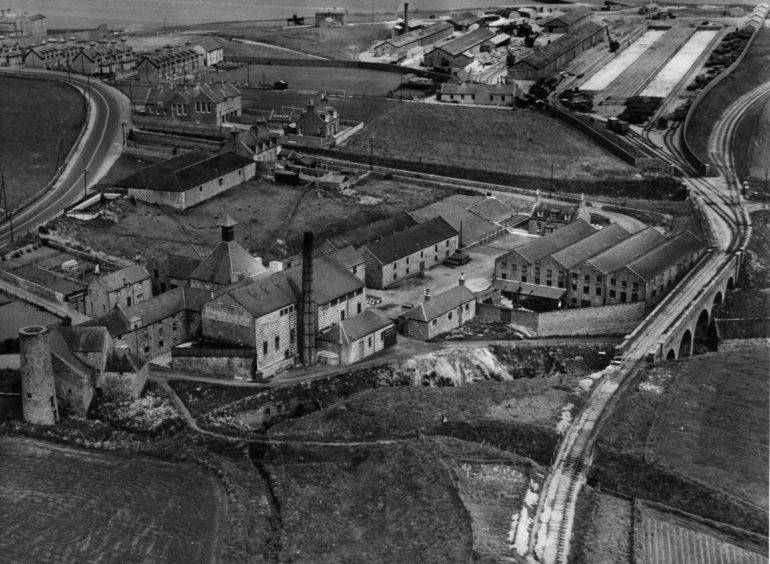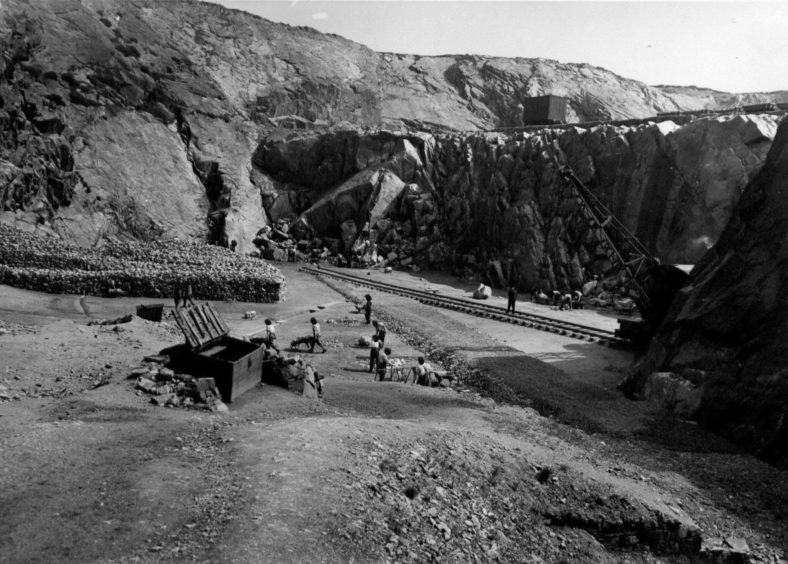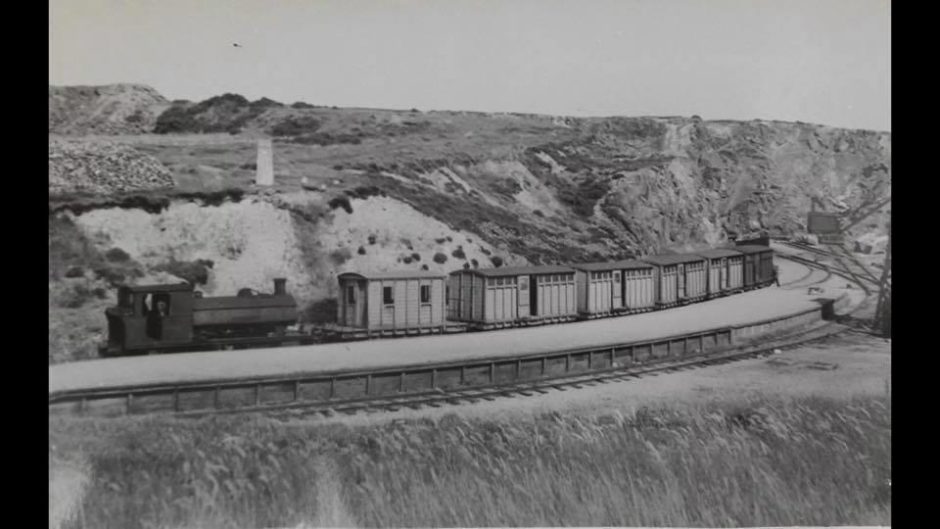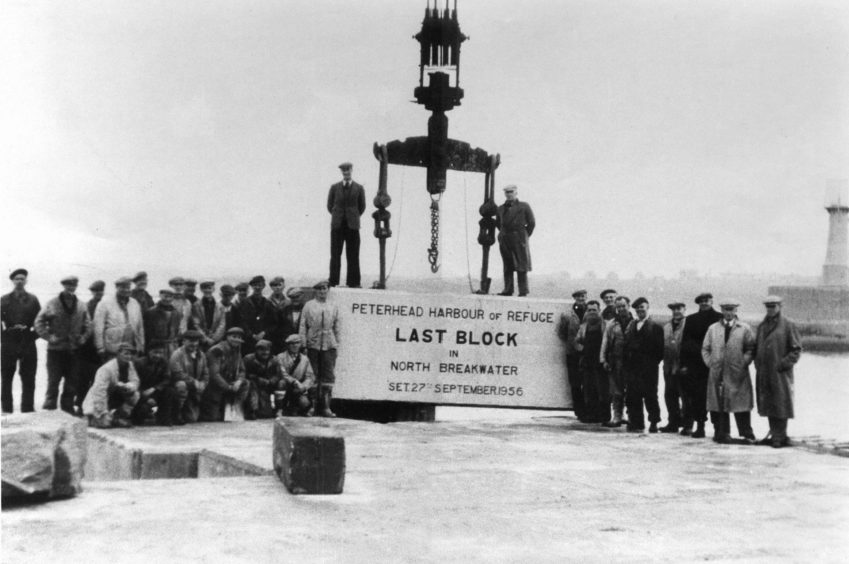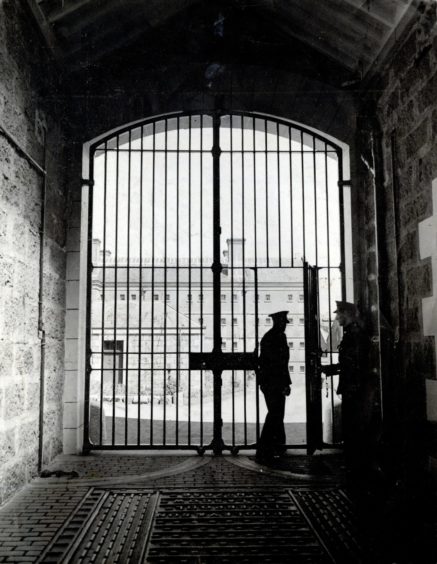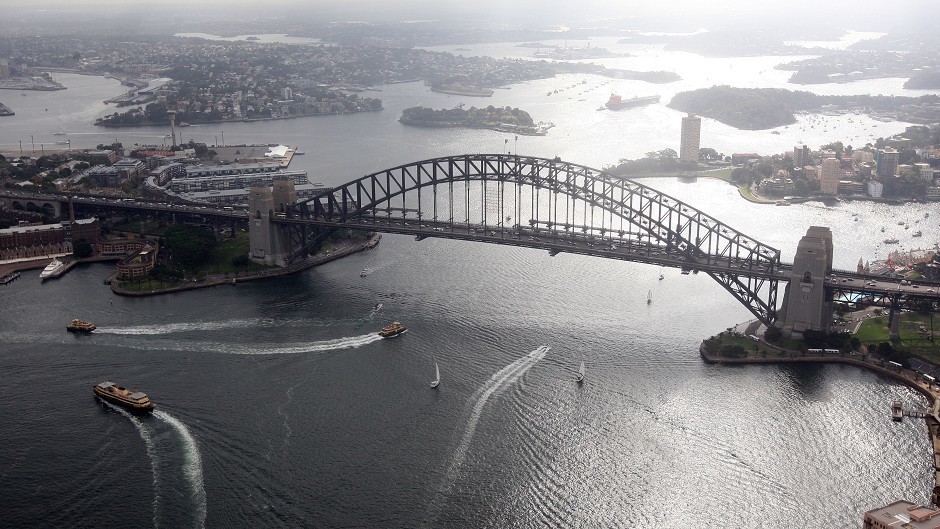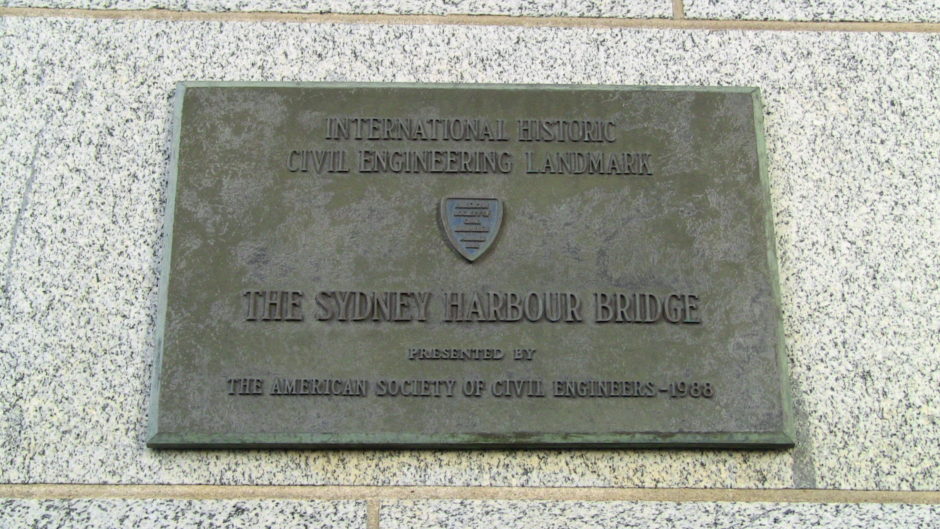It was the first state-owned passenger carrying railway in Britain; a product of Victoriana which ferried criminals to a place of hard labour in the north-east of Scotland.
And although it is more than 50 years since the closure of the Peterhead Prison railway, a new exhibition is being organised to highlight how the route ran past such places as the Long John Distillery at Glenugie and the lost village of Burnhaven.
The service, which was operational for the prison from 1888, ran between the Admiralty Yard – which has become the location of the new HMP Grampian building – and the quarry, which was situated two-and-a-half-miles south of Peterhead.
The train operators constructed a gate, which used to open between the prison and Admiralty Yard, so that the convicts could be transported daily to the quarry and back.
And there are evocative images of the prisoners being marched off to their daily grind, whatever the weather conditions, to carry out often back-breaking work.
Train ferried some fearsome characters down the years
Peterhead Convict Prison was built in 1888 and was originally designed to hold 208 prisoners, all of whom had been sentenced to ‘hard labour’.
Additional buildings were completed in 1909, 1960 and 1962, bringing capacity up to 362, but at times 450 were held within the walls.
The facility eventually closed in 2013, to be replaced by the new HMP Grampian, the first prison in Scotland to jointly house youths, men and women.
Peterhead supplied the labour force to work in Stirlinghill Quarry and in the Admiralty Yard which was attached to the prison.
These convicts supported the work of a civilian labour force employed by the Admiralty to construct the Harbour of Refuge breakwater.
The Admiralty project was unique in Scotland because it was served by the only state-owned passenger-carrying railway in its day.
The last block in the Harbour of Refuge was laid in September 1956 and the railway was decommissioned soon afterwards, but remnants of it are still visible at some points.
Museum is seeking more information about railway life
Although the old prison has long since closed its doors, it now hosts a popular museum which has attracted visitors from all over the world.
And although the venue is currently in lockdown due to Covid-19, its officials are already planning exhibitions which they hope to unveil this summer.
Operations manager Alex Geddes said: “We have been planning two new exhibition areas for two years now, as many of our visitors have commented they would like to know more about the former railway and what life was like in the quarry.
“The pandemic in 2020 slowed the whole process down as we were closed for four months and although this set us back in relation to the timescale it has not deterred us from moving forward to the final stages of the new exhibits.”
Can readers help add more information to the story?
Mr Geddes and his colleagues are working on an ambitious new initiative which they hope will bring the railway back to life, albeit in miniature form.
But they have appealed to Press and Journal readers for memorabilia and mementoes from the days when the train travelled regularly across the Aberdeenshire landscape.
Mr Geddes added: “We have a large scale diorama of the railway that ran between the prison and quarry which we hope to have open later this year.
“This railway carried the convicts up to the quarry daily to break huge granite blocks by hand, before being transported back to the Admiralty Yard for the team there to build the Harbour of Refuge [which was known locally as the breakwater].
“The diorama will also show locations that are now long gone, such as the former village of Burnhaven and the Long John Distillery, as well as showing visitors the landscape that used to surround the prisoners on their daily journey in secure carriages.
“I am now looking for anyone who might have photographs or artefacts or memories of the railway, the quarry, the steam train, Burnhaven and the distillery.
“If anyone has images of the railway or life in the quarry, or would like to share their memories of seeing the trains running, we would be delighted to hear from them.
“Although we are closed again meantime, anyone wishing to make contact can do so via our website’s contact us page at www.peterheadprisonmuseum.com.”
Railway carriages were built to a high standard
The railway was used by generations of often hardened prisoners, who were under armed guard, and lay on the opposite side of the road at Stirling Hill.
It was an understandably isolated service, created for a specific purpose, but it was built to high standards with its own fleet of locomotives, coaches and wagons.
The trains were specially-built vehicles with small barred windows, ensuring there was no prospect of convicts escaping while they were shackled together in transit.
The track bed can be followed along the main road and there was a very pleasant pink-granite viaduct on the route as people entered Peterhead.
The quarry is still in operation, but produces mainly flint products these days.
Granite exhibition will highlight global impact
Mr Geddes said that another room will showcase the granite itself and explain to visitors that stone from the quarry was used in a variety of famous locations including the base of the fountains at Trafalgar Square and as part of Tower Bridge in London.
The first quarry at Stirling Hill was opened in 1815 and there have been no less than 11 separate quarries within a few miles of one another at various stages periods.
Stirling Village was brought to fruition as a result of the Granite Works which were designed by Heslop, Wilson and Co when they opened their first quarry in 1858.
In 1884, the Admiralty commenced construction of the breakwaters for Peterhead Harbour of Refuge: a vast undertaking which required a massive workforce.
A railway was built between the Admiralty Quarry at Stirling Hill and Peterhead Prison to transport prison labour and granite. The stones were crushed at the prison yard and made into large concrete blocks and the project was finally completed in 1956.
The stone went all the way to Australia and America
The red Peterhead granite from Stirling Hill and other local quarries can be found in a variety of surprising places.
The original fountains of Trafalgar Square were made in Aberdeen from Peterhead granite and the Duke of Wellington’s Statue at Buckingham Palace stands on a pedestal of Peterhead granite.
The stone can also be found in the Foreign Office and the British Museum. It was also used for the pillars of Blackfriars and Southwark Bridges in London.
The skills of the workers who produced the monumental stone were also exported round the world. Men travelled to Australia to dress the stonework for Sydney Harbour Bridge, and to Cape Town in South Africa and Vermont in the United States.
The story of the granite community which sprung up Down Under was fascinating.
Jim Fiddes’ book “The Granite Men” highlights how 30 redoubtable characters swapped Aberdeen for Australia in 1926 and the letters they sent home to their friends and relatives indicated they were more than happy with their working conditions and a salary which rose by 10 shillings in the first few months.
At the outset, Dorman Long of Middlesbrough, the company which built the famous bridge, received more than 250 applications from those looking for work. Those seeking the roles were not deterred by the thought of the crossing which took months, often in cramped conditions on stormy seas with basic food and living quarters.
Mr Fiddes stated: “They appointed John Gilmore from Harthill in Kintore, to manage the granite quarry at Moruya, which was 200 miles south of Sydney.
“He had worked at Kemnay, Rubislaw, Peterhead, Brechin and Ailsa Craig quarries and he had also been employed in North America.
Granite Town was established for several years in Australia
“The first party of workers from the north-east left Aberdeen in February, 1926, with another group following them in May.
“Unlike most of the workers, who had gone to North America, they took their families with them and children were born in Australia who later moved back to Aberdeen.”
Mr Gilmore was one of life’s great pioneering figures and he accompanied his wife, his son and no less than eight daughters on the gruelling seven-week voyage, which usually tested the patience and stamina of even the most seaworthy traveller.
The initial contract was for a period of three years with the possibility of further work beyond that time and the Scots joined forces in a place, colloquially known as Granite Town, alongside many Australian and Italian stone masons.
